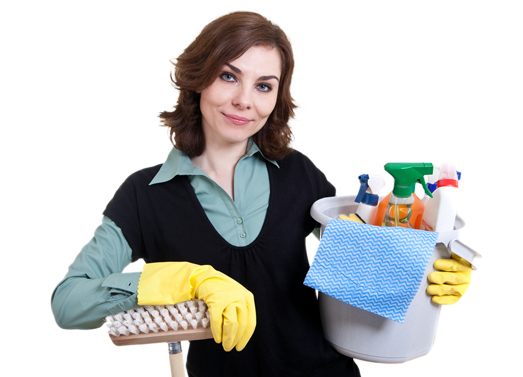Banish Grease Forever: Simplified Cleaning for Enamel Oven Trays
Posted on 26/05/2025
Banish Grease Forever: Simplified Cleaning for Enamel Oven Trays
If you're tired of greasy buildup and stubborn stains on your enamel oven trays, you're not alone. Whether it's after a Sunday roast or a pizza night, grime can stick like glue, making cleaning feel like an impossible chore. But good news: You can restore your enamel trays to their sparkling best without hours of scrubbing or harsh chemicals. This comprehensive guide covers everything you need to know for effortless and effective enamel oven tray cleaning.
Understanding Enamel Oven Trays and Why They Get Greasy
Enamel oven trays combine the strength of metal with a non-porous, glazed finish that resists sticking and staining--most of the time. Unfortunately, grease, food particles, and burnt-on residue can still accumulate, especially after repeated use.
- Fat from meats and oils often bakes at high temperatures, resulting in tough, sticky messes.
- Overcooked or sugary foods can leave behind charred patches that seem impossible to shift.
- A dirty enamel tray can diminish cooking performance and even alter the taste of food.
Why Choose Enamel Trays?
Their non-reactive surface offers excellent protection against rust and odors--a big advantage versus uncoated metal trays. When kept clean, they're also easier to maintain and last much longer.

Essential Supplies for Cleaning Enamel Oven Trays
Before diving into the cleaning process, gather these handy tools and gentle solutions:
- Baking soda - a natural abrasive that tackles tough stains
- White vinegar - dissolves grease and neutralizes odors
- Dish soap - helps lift everyday grime
- Non-scratch scouring pads or sponges
- Rubber gloves to protect your hands
- Soft cloths or paper towels for drying
Optional Supplies for Stubborn Stains
- Hydrogen peroxide (for especially persistent spots)
- Commercial oven or enamel tray cleaners (always check compatibility)
- Plastic scraper
Step-by-Step Guide: Simplified Cleaning for Enamel Oven Trays
1. Act Quickly: The Golden Rule of Easy Cleaning
If possible, start cleaning your enamel oven tray soon after use. The longer grease and food residue sit, the harder they are to remove.
2. The Pre-Soak: Effortless Preparation
- Allow the tray to cool to a safe temperature.
- Fill your sink with hot water and mix in generous squirt of dish soap.
- Let the tray soak for 15-30 minutes (longer for heavier buildup).
This simple step softens hardened residue, making it far easier to clean.
3. Scrape Away Loose Debris
Gently remove large particles with a plastic scraper. Avoid metal utensils, which can damage the enamel coating.
4. Baking Soda Paste: Your Non-Toxic Secret Weapon
- In a small bowl, mix baking soda with water to form a thick paste.
- Spread the paste evenly over greasy, stained areas of the tray.
- Leave it for 20-30 minutes.
- Scrub gently with a non-abrasive pad.
Baking soda breaks down tough grease and safe for your enamel finish.
5. Vinegar Rinse for Lasting Shine
- After scrubbing, rinse the tray under hot water.
- Spray or pour a little white vinegar over the surface.
- Let it fizz--this further lifts remaining grease and deodorizes the tray.
- Rinse once more with hot water.
6. Dry Thoroughly
Use a soft cloth or paper towels to avoid water spots or streaks.
Handling Tough, Baked-On Grease and Stains on Enamel Trays
Some greasy stains prove especially persistent. Don't despair! Try these advanced alternative methods to deep clean enamel oven trays:
Hydrogen Peroxide and Baking Soda Power Clean
- Sprinkle baking soda over the stubborn stains.
- Pour a little hydrogen peroxide over the top.
- Leave for up to 2 hours--watch as stains begin to dissolve!
- Scrub gently afterwards, then rinse thoroughly.
Boiling Water Soak
- Fill the tray with boiling water.
- Add a few drops of dish soap and a tablespoon of baking soda.
- Soak for 1 hour before scrubbing.
Commercial Cleaners: Use with Caution
If you choose a commercial enamel tray cleaner, always read and follow the manufacturer's instructions carefully. Some formulas are designed specifically for enamel and can make life easier, but avoid overly harsh or abrasive products that may dull or chip your tray.
Preventing Grease Build-Up on Enamel Oven Trays
Once you've worked hard to banish old grease, a few simple habits will ensure your trays stay cleaner for longer:
- Always use parchment paper or a silicone baking mat for roasting or baking sticky foods. This forms a barrier between grease and your tray.
- Wipe trays with a damp cloth immediately after use if you can't wash them right away.
- Perform a regular deep clean (baking soda method) once a month for heavily used trays.
- Store trays in a dry place--moisture can cause staining or rust at any exposed edges.
- Avoid using metal utensils that could scratch or compromise the protective enamel coating.
Alternative Methods: What to Avoid
- Steel wool or abrasive scrubbers - can scratch or wear enamel, leading to chips or rust.
- Bleach - not recommended, as it can degrade the enamel over time.
- Leaving trays wet or stacking before they're completely dry--this can encourage staining.
Are Enamel Oven Trays Dishwasher Safe?
Many manufacturers label their enamel oven trays as dishwasher safe. However, there are a few things to consider:
- Repeated dishwasher cycles may diminish shine and increase the risk of chipping if trays are bumped.
- Hand washing is gentler and more effective for stubborn grease.
If using a dishwasher, place the tray on the top rack and avoid mixing it with sharp or heavy utensils.
Frequently Asked Questions about Cleaning Enamel Oven Trays
Can I use oven cleaner on enamel trays?
Most oven cleaners are designed for metal and may be too harsh for enamel. Always check your manufacturer's guidelines, and opt for enamel-safe products when available.
How do I remove burnt-on sugar or caramel?
Soak the tray overnight in hot water with plenty of dish soap. For persistent residue, use the baking soda and vinegar method outlined above.
Will vinegar mark or damage my enamel oven tray?
Vinegar is safe for most enamel trays when used diluted and rinsed promptly, but prolonged soaking should be avoided.
Can I restore chipped enamel trays?
Chipped trays should be handled with care. While minor chips won't affect functionality, areas of exposed metal can rust and should be sealed with food-safe enamel repair kits if possible.
Is it safe to use baking soda on enamel?
Yes! Baking soda is non-abrasive and highly effective for cleaning enamel surfaces.

Key Takeaways: No More Greasy Enamel Oven Trays
- Act quickly: Clean trays as soon as they cool for the easiest results.
- Soak, scrub gently, and use natural agents like baking soda and vinegar for thorough, safe cleaning.
- Avoid harsh abrasives or chemicals that can damage enamel's beautiful glaze.
- Prevent future build-up by using liners or mats and promptly wiping grease away after each use.
By following these simple but effective techniques, your enamel oven trays will resist greasy build-up, stay looking their best, and deliver delicious results for years.
Bonus Tips for Spotless, Grease-Free Enamel Oven Trays
- Use lemon juice as a natural degreaser for an extra-fresh scent.
- Mix a little cornstarch with baking soda for a thicker paste on vertical surfaces.
- Rotate your trays regularly to ensure even wear and less stubborn residue buildup in the same spots.
Ready to banish grease forever? Keep this guide handy and make the most of your enamel oven trays. For more tips, subscribe to our newsletter or follow us for ongoing kitchen cleaning inspiration!




